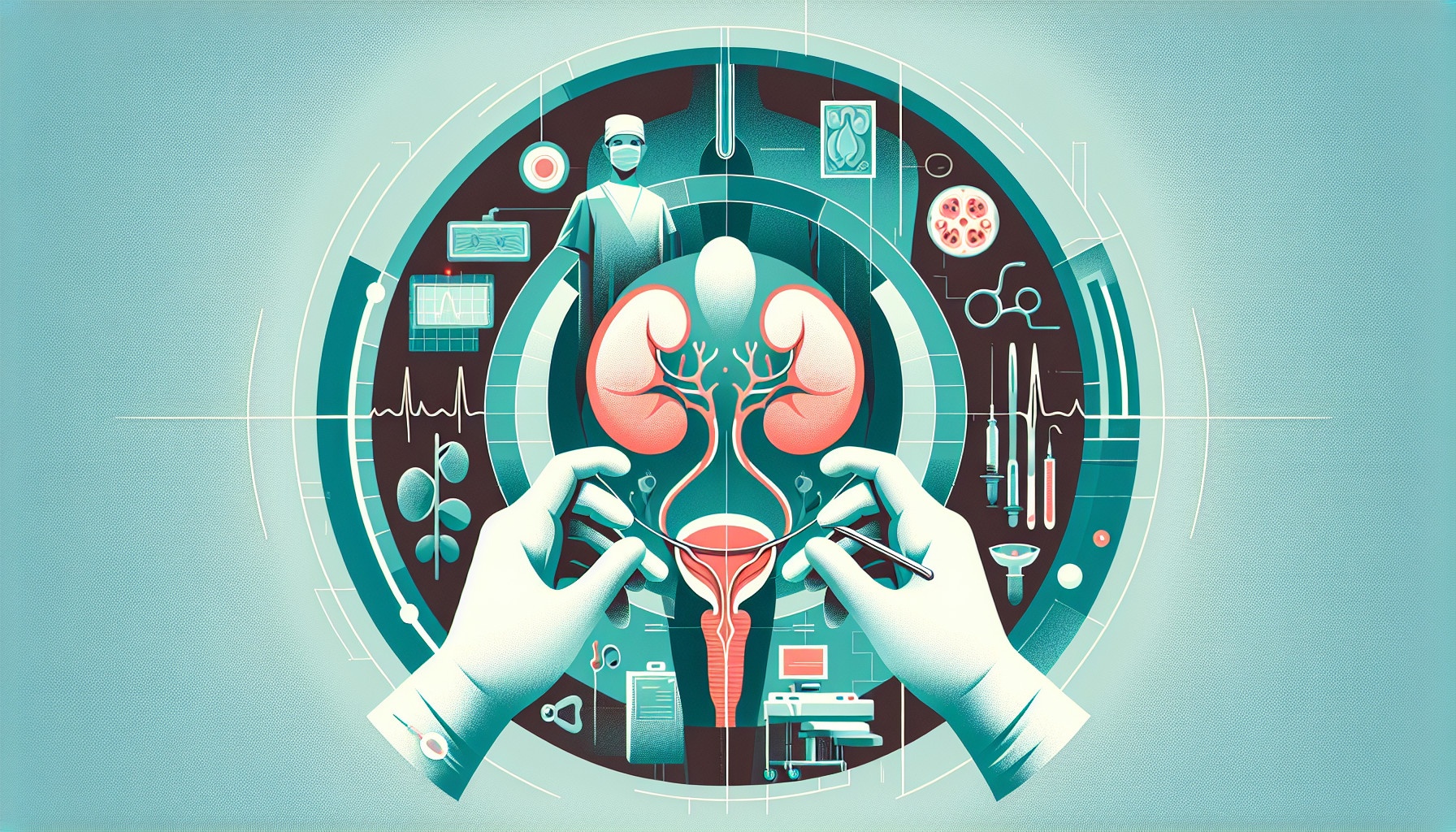Our Summary
This study aimed to see if filling the bladder with saline solution after a certain type of gynecologic surgery could help patients pee sooner and leave the hospital quicker. This technique, known as retrofilling, was compared to the standard practice of just taking out the catheter and letting the bladder fill naturally.
The study was conducted on patients undergoing laparoscopic gynecologic surgery, which is a minimally invasive procedure that uses a tiny camera to look inside the abdomen. The surgery was for non-cancerous conditions and didn’t include procedures like hysterectomies or pelvic reconstructive surgery.
The results of the study showed that retrofilling the bladder did indeed help patients pee sooner and get discharged from the hospital quicker. The time it took for patients to pee for the first time after surgery was shorter for the group that had their bladders filled with saline. Likewise, these patients were able to leave the hospital sooner.
The study also looked at other factors like urinary tract infections and patient satisfaction. They found no cases of urinary tract infections in either group, and most patients in both groups (over 88%) were satisfied or very satisfied with their care.
Overall, the study concluded that retrofilling the bladder is a safe and effective method that can help reduce the length of hospital stay after certain types of gynecologic surgery. The study was registered with ClinicalTrials.gov.
FAQs
- What is the purpose of retrofilling the bladder with saline solution after gynecologic surgery?
- What types of surgeries were involved in the study about retrofilling the bladder?
- Does retrofilling the bladder after gynecologic surgery have any impact on the risk of urinary tract infections or patient satisfaction?
Doctor’s Tip
A helpful tip a doctor might tell a patient about bladder surgery is to follow post-operative instructions carefully, including taking any prescribed medications, drinking plenty of water, and avoiding strenuous activities. It’s also important to attend follow-up appointments and communicate any concerns or symptoms to your healthcare provider. Additionally, maintaining good hygiene and practicing pelvic floor exercises as recommended can help with recovery.
Suitable For
Patients who are undergoing laparoscopic gynecologic surgery for non-cancerous conditions, excluding procedures like hysterectomies or pelvic reconstructive surgery, are typically recommended bladder surgery. This study specifically focused on this patient population and found that retrofilling the bladder with saline solution after surgery can help patients pee sooner and leave the hospital quicker.
Timeline
Before bladder surgery, a patient may experience symptoms such as urinary incontinence, frequent urination, bladder pain, or difficulty emptying the bladder. They may undergo diagnostic tests like a cystoscopy or urodynamic testing to determine the cause of their symptoms.
After bladder surgery, the patient will likely experience pain, discomfort, and difficulty urinating. They may have a catheter in place to drain urine from the bladder. The healthcare team will monitor the patient for any signs of infection or complications. The patient will gradually be able to start urinating on their own as they recover from surgery.
Overall, the patient may experience a quicker recovery and shorter hospital stay if they undergo retrofilling of the bladder after surgery, compared to the standard practice of allowing the bladder to fill naturally. This technique can help improve patient outcomes and satisfaction following gynecologic surgery.
What to Ask Your Doctor
Some questions a patient should ask their doctor about bladder surgery include:
- What type of bladder surgery will I be undergoing?
- What are the potential risks and complications associated with this surgery?
- How long will the recovery process be and what can I expect during this time?
- Will I need a catheter after the surgery, and if so, for how long?
- Will retrofilling the bladder be part of my procedure, and how does this technique work?
- What are the potential benefits of retrofilling the bladder in terms of recovery time and overall outcome?
- Are there any specific instructions I should follow before and after the surgery to ensure the best results?
- How will my pain be managed after the surgery?
- Will I need any follow-up appointments or additional care after the surgery?
- Are there any alternative treatment options available for my condition that I should consider?
Reference
Authors: Zakhari A, Paek W, Chan W, Edwards D, Matelski J, Solnik MJ, Murji A. Journal: J Minim Invasive Gynecol. 2021 May;28(5):1006-1012.e1. doi: 10.1016/j.jmig.2020.09.019. Epub 2020 Oct 3. PMID: 33017685
